
Written and produced by SF Team: Daniel Deiss, Edwin Watson
Over the course of decades, the US and Israel have maintained close bilateral relations based on long-term, stable pro-Israel US policies. Traditionally they have rendered strong support to Israel, since the two countries are allies, have shared strategic interests in the Middle East (concern with Iran, Assad regime in Syria, and Islamic extremism), and adherence to a shared definition of democratic values. US aid helped Israel transform its military into one of the most technologically advanced in the world. Since the Jewish state is heavily limited in its human, territorial, and material resources, it had to emphasize qualitative superiority in the region, and US aid did much to sustain that superiority.
The biggest element of US-Israeli military-technical cooperation is military aid. Israel is the main recipient of US military aid in the form of grants and direct deliveries of equipment on advantageous terms. Since 1976, Israel has been the biggest recipient of annual US aid, and since 1987 of US military aid. In addition, by some estimates Israel receives $1 billion a year in the form of charity contributions, and a similar sum through short- and long-term funds. US provide aid to Israel in various forms: Foreign Military Sales, Direct Commercial Sales, Excess Defense Articles, and also funds to support research and development. Moreover, the Foreign Military Financing program implemented by the US Department of State has become, over the years, the largest of all such programs implemented by the US. One should note that, for example, out of $5.7 billion budgeted for this program in 2014, $3.1 went to Israel, In other words, Israel obtains more military assistance through this program than the rest of the world combined. This sum does not include the financing for Israel’s ABM programs, which are estimated at another $500 million. Unlike other programs, FMF allows Israel to spend up to 25% of US-provided funding on own military programs. All other countries receiving military aid must spend it only on US weapons and equipment.
The US military assistance annual totals are presented in the following table.
One should note that the true amounts of US aid are unknown, since the value of financing, services, and military equipment are provided only for FMF and DCS (Direct Commercial Sales) Programs.
The long-term US-Israel treaty on military assistance deserves separate treatment. The new agreement concluded in September 2016 states the US will provide Israel with $38 billion of aid between 2018 and 2027. This agreement will enter into force upon the expiration of the current one in December 2017, under which the US gave Israel $3 billion every year ($30 billion over 10 years).
US National Security Advisor Susan Rice noted the deal “will represent a significant increase of support and provision of means to modernize most of its fighter fleet, increase land unit mobility, and strengthen ABM capabilities.” This is a record sum in the whole history of US military deals, but Israel was forced to make concessions in order to get it. For example, Israel’s PM Benjamin Netanyahu demanded an increase to $4.5 billion/year. But in the end Israel not only got a lower sum but also had to give up on additional assistance from US Congress and transition to buying only US military equipment within six years. Moreover, Israel’s leader promised not to turn to members of Congress to ask for more, even though he used to have that right, to the tune of up to $500 million/year.
The increase of aid and the new agreement a year before old one’s expiration is surprising, because Obama-Netanyahu relations were complicated. It’s very likely the hurry in reaching new deal was motivated by desire to use it as a campaign prop for Hillary Clinton. It’s no secret Israel’s government circles would have preferred to sign a deal with Trump who is an open supporter of Israel. The new deal was one way or the other supposed to compensate the Jewish state for the lifting of sanctions on Iran and push Israel toward more concessions in the Palestinian question. US and Israeli experts believe that even of Obama and Netanyahu failed to reach an agreement, the aid would have been provided, only through a different venue. Both parties in Congress have good relations with Israel, US has a large Jewish diaspora and a much larger Christian Evangelical community which also has strong influence and supports warm relations.
As far as relations with Trump’s administration are concerned, it’s too early to draw conclusions. It’s possible the agreement will be revisited and aid increased on the condition Israel buys more US equipment. One has to keep in mind the new president actively defends interests of own MIC and could damage relations with Netanyahu and Israeli MIC. But irrespective of who is in the White House, military aid and cooperation are a priority matter since both sides are interested in access to the other partner’s technologies and markets, and Israel moreover wants US financial aid.
But there are also foes of such deals in Israel, including its MIC. They are strongly opposed to spending 75% on US equipment. A senior MIC official, the head of the Manufacturer’s Association of Israel (MAI) Shraga Brosh, said: “Adopting Obama’s plan (the 2016 deal) would be a death blow to Israel’s defense manufacturing and loss of thousands of jobs to the Americans.” MAI data states Israel’s MIC employs 15% of the country’s workers, and each billion spent supports 2,000 jobs in the MIC and 5,500 jobs in the rest of the economy.
In addition to money, US provides Israel with most advanced weapons. At the top of the list are ABM systems and combat aircraft. Israel closed its own fighter development program, and since the mid-‘80s its fleet consists of F-15s and -16s and their variants. Their gradual obsolescence has motivated Israel’s military leaders to renew the fleet. Israel chose the newest US F-35 multirole fighters. The first Israeli F-35I Adir (Powerful) arrived in the country on December 12, 2016. As of November 2017, Israel has 7 F-35s. By 2020 Israel is to receive 33 fighters and 4 flight simulators, valued at $5.3 billion. The contract calls for a total of 50 aircraft. Ultimately Israeli air force should get about 100 F-35s.
Israel has become not only the first US ally to receive the newest fighter (as noted on June 19, 2013 by Lockheed-Martin VP Steve O’Brien at Le Bourget), but the only to have the right to mount own systems on the plane (the suffix I means the aircraft are built for Israel and have Israeli avionics). These demands have considerably delayed in the negotiations on procuring the first batch.
This raises the question of this plane’s application. The current F-15/16 are well suited to fighting Hamas or Hezbollah. IDF is not at war with radical Islamists. But Israel’s rhetoric toward Iran has become more and more belligerent in recent years. Therefore it’s logical to assume the 5th generation fighters are supposed to deter Iran’s military, which are seen by US and Israel as the most likely adversary in the region. In addition, Israel’s adoption of F-35 addresses a number of problems for the US. US MIC gets an order that will be partly paid for by Israel. Israel buys aircraft from US, not elsewhere. The potential theater of war receives more squadrons of latest fighters deployed in US interests.
This year’s Israel’s defense budget
Structure, main categories, aims, and goals
The most important parts of the defense budget are classified. Only the total sum of defense expenditures is known, and the parts of the budget not related to procurement or R&D. 2017 defense budget was 70.7 billion shekels. Only 15.4 billion are in the unclassified parts. The most important among those are the retirement benefits (7.85 billion shekels), the Disabled Rehabilitation Division (3.42 billion shekels), the Department of Families and Commemoration (1,65 billion shekels). Other available totals are salaries (6.1 billion in 2013), education (250 billion in 2013), fortifications on the border with Gaza strip (380 million in 2013), life insurance, training center construction, the national de-mining agency, financing the work of delegations, etc. Moreover, in the event of combat operations the MOD can obtain additional funding. For example, during the 2006 war with Lebanon the MOD received additional 8.2 billion shekels, the 2014 Immovable Rock operation received 7.2 billion. The defense budget has one additional peculiarity. Some programs are financed not only by MOD but also other ministries. For example, Gaza fortifications, training centers, the Libi Fund (a charity organization supporting the IDF). Here one should note US aid accounts for 25-30% of defense budget. Israeli defense expenditures have shown a trend toward becoming a lower share of state budget. In 2010, defense accounted for 23.2% of all spending, in 2015—20.4%, in 2016—19.8%.
IDF modernization plans
The IDF currently represents a unique combination of nuclear weapons and delivery means, weapons produced in the 1960s, and ultra-modern weapons on a par with leading world powers. This combination is its minuses, and therefore IDF leadership is undertaking measures to ensure it can oppose modern threats.
The five-year Gideon Plan adopted in 2015 and stretching to 2020 was described in “Israeli Defense Forces: Military Capabilities, Scenarios for the Third Lebanon War” (https://southfront.org/israeli-defense-forces-military-capabilities-scenarios-for-the-third-lebanon-war/).
In August 2015, IDF General Staff issued a report titled “IDF Strategy” outlining its aims concerning vital national interests and national security concepts it adopted. The Strategy asserts that WMD threats to Israel have decreased due to the destruction of Syria’s chemical arsenal and the shuttering of chemical and nuclear weapons programs in Iraq and Libya. Israel is instead threatened by the growing power of non-state actors such as ISIS and other terror groups such as Jabhat al-Nusra. The Strategy also perceives Hezbollah and Hamas as dangerous foes possessing an arsenal of almost 100,000 rockets that could hit early every military or civilian target in Israel.
IDF also plan a range of technological modernizations and structural reforms in all three branches of service. IDF are trying to adapt to a new reality. Its tank fleet has decreased by 75% since 1985 and obsolete fighter fleet by 50%. It is investing heavily in expanding its submarine fleet (six Dolphin/Tanin boats instead of current five) which can launch nuclear-capable missiles this becoming Israel’s second nuclear strike force. In the last 20 years the IDF increased its drone fleet by a factor of 5 and enhanced intelligence-gathering capabilities, including in cyberspace.
Starting in 2013, IDF began withdrawing US M16 rifles from all land forces units in favor of own Tavor. IDF is replacing obsolete M113 APCs with new ones (which actually are something between an IFV and a tank) of the Namer and Eithan types, and is modernizing existing Achzarits. The core of IDF artillery corps, M109 howitzers, will be gradually replaced with ATMOS 2000 produced by Elbit. Israeli air force plans to buy 100 F-35 fighters equipped with Israeli avionics. They will use Israeli radars, guided bombs, and air-to-air missiles. IDF also plans to withdraw all manned aircraft and use only strike UAVs. Israel’s navy is expanding its submarine fleet. Of the current five boats, two most recent ones entered service in 2014 and 2016. The sixth is expected in 2018. The IDF is also modernizing its surface fleet by modernizing automated combat systems of its Sa’ar 5 and Sa’ar 4.5 corvettes and missile boats. It will order four Sa’ar 6 and three Sa’ar 72 corvettes, the latter being enlarged and improved Sa’ar 4.5 boats.
One may draw the conclusion that military and political leaders are mainly concerned with rearming its air and naval components. The IDF of the ‘60s-‘80s, armed with masses of tanks and aircraft and consisting of 10% of population is fading into the past. It is being replaced by a relatively small professional army armed with heavy IFVs, 5th-generation fighters, and lots of UAVs, including strike ones, indigenous ABM systems capable of competing with anything else in the world. This military will be able to resist modern threats and pose a challenge to regional powers. The latter priority is becoming more evident in the recent rhetoric concerning Iran and Syria. Thus it can’t be ruled out the military won’t shift from words to deeds. Layered air and missile defense systems apparently are giving Israel’s leaders a sense of security and impunity. Which is a deceptive sense. No ABM system can give 100% security, which was demonstrated during the Gaza strip conflict in November 2012. Tests of these systems took place in near-ideal conditions, in order to demonstrate capabilities and secure a contract, rather than against a mass launch of rockets.
Israel’s Military Industrial Complex
Israel’s military industrial complex (MIC) is the leading component of the country’s economy. It concentrates the country’s high-tech R&D, production, and economic potential. The defense industry produces weapons for own military and for export. Israel, which is only 95th in terms of population and 148th in terms of territory, is one of the top 10 exporters of arms. Israel’s MIC is peculiar in that it is export oriented—nearly 75% of its products are for foreign customers. This is due to the prolonged US-Israeli military, technological, and scientific collaboration, Israeli firms’ access to modern US technologies, long-term US financial aid to Israel’s civilian and defense economies, the mass staffing of the MIC with highly qualified cadres from among immigrants from former USSR.
Israel currently has state organizations engaged in R&D at the national and ministerial level, and also research institutions, universities, and other private and state entities. National-level state institutions include the Ministerial Science and Technology Committee (the central state organization dealing with R&D) and the Ministry of Science and Development.
Defense industry includes missile/space, aviation, armored vehicle, small arms and artillery, ship-building, and radio-electronic branches. The most developed are the military radio-electronics, missile weapons, armored vehicles and aviation equipment (though not aircraft or helicopters), artillery and small arms. In these realms, Israel has firms controlling the full technological cycle and does not need to import components.
R&D is well-funded, benefits from conflict experience, and is based on futuristic concepts of combat operations. Israel currently has the largest per-capita concentration of start-ups. In 2014 Israeli start-ups set a record in attracting investment, at $3.4 billion, which exceeded 2013 by 46%. In 2015 the market grew by another 30%.
The core of defense industry are two state firms: Israel Aircraft Industries (IAI) and Israel Military Industries (IMI), as well as the Rafael Armament Development Authority of Israel.
IAI was founded in 1952, is headquartered at Lod, employs 16,000, and has annual sales of about $4 billion (2014). It consists of several departments: Electronics Division, Technology Division, and Aircraft Division. IAI has subsidiaries and affiliates (ELTA Systems Ltd which develops radars, communications, EW; Bedek Aviation Group, which services aircraft, engines, and components). IAI conducts research, development, production, servicing, and sales of aviation equipment, mainly drones, missile and space systems, air-defense systems, electronic, optical, and electro-mechanical equipment. Affiliates develop and produce Shavit space-launch vehicles, Jericho-1 SRBMs and Jericho-2 IRBMs, Gabriel SSMs, rocket artillery, electronic components, navigational systems, ballistic missile and SLV engines, telemetry systems, inertial navigation and guidance systems, gyrostabilized platforms and tools, and also the production of mechanical, electronic, and electro-mechanical equipment. IAI also develops and modernizes aviation equipment and Israeli naval warships.
IMI was founded in 1933, is based in Ramat HaSharon, employs over 3,000. In April 2014 an agreement was signed on privatizing IMI. However, several strategic production lines which the state wants to preserve under its direct control due to secrecy and security will be transferred into the specially formed Tomer state company. IMI conducts R&D, produces small arms and artillery equipment, armored vehicles for land, air, and naval forces, all types of munitions, rocket launch systems, composites, inertial guidance systems, radioelectronics, shipboard management systems, and other products.
Rafael Advanced Defense Systems Ltd. Was founded in 1948, employs about 7,500, including 1,500 engineers and technicians, and has gross income of over $2.3 billion (2016). It is a specialized scientific organization serving Israel’s MOD which conducts R&D, modernization, development and production of new types of weapons and equipment. Rafael deals with the whole spectrum of modern technologies, including: guided and unguided rockets, EW, protection of communications lines, armor active defense systems, optronics, night vision, computers, fire direction, telemetry, and training range equipment. The firm also researches and produces solid rocket fuel for ballistic missiles and SLVs, fuselages for such rockets, nozzles, coverings, state separation systems, rocket launchers, ballistic missile warheads, detonators, thrust control mechanisms, high-temperature burn chambers, thermal-resistant and composite materials, development and testing of Jericho-2 warheads. It also conducts research on future composites, and on ballistics and aerodynamics. Currently its attention is focused on perfecting Iron Dome and David’s Sling ABM systems, and on Trophy active defense for tanks and IFVs.
In recent years, mergers in defense industry meant the number of firms has decreased, and individual firms have broader areas of responsibility and political influence. This is particularly applicable to Elbit.
Elbit was founded in 1967, is based in Haifa, and has a gross income of $3.3 billion. It employs about 13,000. It is the biggest privately-owned defense firm in Israel. It includes such formerly big firms as Soltam (artillery), Elisra Group (military communications, missile attack warning systems, active jamming, laser and IR detection systems for aircraft and ships). It develops and produces UAVs, avionics, radars, artillery fire direction, automated battlefield command systems, military communications. Elbit’s subdivisions develop and produce electronics and components, IR and laser systems, flight data collection and processing systems, computerized diagnostics stands for complex systems, test stands imitating outer space, communications, space and land tracking and telemetry systems. Elbit also conducts research into digital technologies, aerodynamic forms, thermal-resistant and composite materials, and analytical work on high and low pressure, ultra-high and –low temperatures, testing of space systems, equipment, materials, and components for reliability.
The firm also produces training simulators for land and air forces. It was particularly successful in modernizing obsolete Soviet equipment.
Israel Shipyards is one of the largest ship-building and –repair firms in the country. Founded in 1959, it employs over 300 workers. It produces missile boats, patrol boats, tugs, multi-purpose boats and cranes. Its facilities are located in the Haifa harbor.
Aeronautics Defense Systems Ltd. It was founded in 1997 and is based in Yavna. Its gross income in 2015 was $150 million. It specializes in military and commercial UAVs.
Main achievements in arms manufacture
The biggest successes were achieved in UAVs and ABM systems.
UAVs
IAI Heron. Long-range UAV. One of the most exported Israeli UAVs. First flight 1994, top speed 200km/h, operating radius up to 1,500km, endurance up to 46h, take-off weight 1150kg. A single UAV can track six targets at one time and designate them for fighters, helicopters, and missiles. Sold to Brazil, India, Turkey, and others. France’s EADS Harfang is based on the Heron.
IAI Eitan. Further development of Heron, the largest military UAV in the world. First flight 2004, top speed 370km/h, flight radius of up to 7,400km, endurance of up to 36hrs, max T/O weight 4650kg. This UAV is equipped with radioelectronic reconnaissance systems, there are reports it can be equipped with guided weapons. There are reports of its sale to India.
IAI Bird-eye 400. Mini-UAV. First flight 2003, 10km flight radius, 1hr endurance, T/O weight 5.5kg. Used for target reconnaissance fire spotting and correction, discovering UAV and airplane crash sites. It may be stowed in two backpacks and carried to launch site by two individuals.
Hermes 450. Developed by Elbit. First flight 1994, 170km/h top speed, 200km radius, 14h endurance, 450kg T/O weight. Made of composites, which makes detection more difficult. The UAV is equipped with optronic, IR, and laser sensors and datalinks capable of providing real-time imagery to ground control stations. Delivered to Azerbaijan, Brazil, Columbia, Mexico, and other countries.
Hermes 900. Developed by Elbit. First flight 2009. 220km/h speed, 1500km radius, 36h endurance, 970kg T/O weight. Includes satellite comms, optronics, moving target detection radar, EW systems, laser rangefinder/designator, and a datalink allowing real-time image transmission. The UAV is modular, allowing quick change of components and sensors. Delivered to Chile, Brazil, Columbia, Mexico, Switzerland.
Hermes 1500. Developed by Elbit. First flight 1997, 300km/h speed, 200km radius, 40h endurance, 1650kg T/O weight. Resembles a light aircraft. It is intended for observation, patrol, reconnaissance, and maintaining communications during combat operations.
Silver Arrow Sniper. Developed by Elbit. First shown in 1998. Top speed 176km/h, 200km radius, 6h endurance, 170kg T/O weight. Intended for battlefield reconnaissance, artillery fire correction, and data collection for special ops troops during day or night.
IDF anti-ballistic missile systems
Iron Dome tactical ABM. Developed by Rafael. Short-range ABM layer of the country, used for protection from unguided tactical rockets with ranges of 4-70km. The first battery became operation in March 2011. During the November 2012 Operation Pillar of Cloud Iron Dome inercepted 421 rockets fired from Gaza strip. Israeli specialists estimate its effectiveness at 85%.
Battery composition
- Elta EL/M-2084 mutlirole radar to identify targets and determine their trajectory. Since nearly 75% of Qassam rockets miss their targets, the radar permits trajectory analysis in order to avoid launching at rockets that will hit unpopulated areas. This greatly reduces the cost of using this ABM system.
- Fire direction center.
- Three or four launchers with 20 Tamir missiles each. Each rocket is 3m long, has 160mm caliber, and weighs 90kg. Active radar guidance. Non-contact fuse.
David’s Sling (also known as Magic Wand) ABM System. Joint development by Rafael and Raytheon. Israel’s medium-range ABM defense. Used to intercept aircraft, SRBMs, unguided large-caliber artillery rockets with range of 70-300km, and subsonic cruise missiles. Ceiling of 50km with missile speed of up to M 7.5. The missile is a two-stage system with two orientation and guidance systems (radar and optronic sensors). The first two batteries became operational at the IDF Hatzor airbase in April 2017.
Arrow-2 ABM system. Jointly developed by IAI and US Missile Defense Agency. Work began in 1986. The first battery was deployed in 2000. Since 2009, IAI and Boeing have been working on the new Arrow-3 which will use a kinetic-impact warhead instead of blast-fragmentation of Arrow-2. It will also have a thrust-vectoring rocket motor. Arrow-3 is supposed to intercept ballistic missiles with ranges of 400-2,000km.
The mobile Arrow Weapon System includes:
- EL/M-2080 Green Pine early warning active phased array radar (Arrow-3 will have Super Green Pine or Great Pine).
- Golden Citron/Citron Tree command point manufactured by Tadiran Telecom.
- Communications center.
- Brown Hazelnut/Hazelnut Tree launch control point, manufactured by IAI.
- Four mobile vertical launch systems for Arrow-2 missiles (6 missiles each, in individual transport/launch containers).
- Support equipment, including power generator and radar cooling system.
The radar can detect and track up to 12 discrete targets at one time, and engage one of them with two Arrow-2s. Detection range of 800-900km. Maximum intercept radius is up to 100km, ceiling of 50km (Arrow-3—100km). Arrow-2 has a speed of 2-3km/s and its interception probability is estimated at 90%.
Iron Beam tactical ABM. Developed by Rafael, first shown in 2014, and described as adopted into IDF service in 2016. This system is supposed to supplement Iron Dome and is used to intercept very short range rockets, drones, artillery shells at range of up to 7km. The system uses a laser as its kill mechanism. It includes a radar, a command post, and two laser weapons. It was reported as successful in tests against artillery shells.
Export contracts and future prospects
In 2016, Israel’s defense exports reached $6.5 billion, distributed as follows:
- 20%: modernization of aircraft and helicopters.
- 18%: observation and monitoring systems, optronics.
- 15%: missile and air defense.
- 13%: land forces weapons and munitions.
- 12% radars and EW
- 8% : cybersecurity and intelligence-gathering
- 7%: UAVs.
- 4%: communications.
- 1%: naval systems.
Most of the orders went to the Asia-Pacific region, totaling $2.6 billion, then Europe at %1.79 billion, North America $1.26 billion, Latin America $550 million, and Africa $275 million.
By way of comparison: In 2015 the largest export sectors were modernization of aircraft and helicopters and delivery of munitions, each with 14%. Radars were 12%, UAVs, observation systems and optronics each at 11%. Communications accounted for 0%, ABM and air defense for 6%, satellite systems 5% and naval systems 2%.
In 2015, the largest market for Israeli military products became Asia-Pacific, which bought $2.32 billion of Israeli weapons. Europe signed contracts for $1.63 billion, North America $1.02 billion, Latin America $577 million, and Africa $163 million.
Contracts
The following is media-provided information about Israeli defense firms foreign contracts.
IAI
Some of the wings (some assessments claim up to 1/3 of total volume) for F-35 fighters are produced at IAI plants. The contract was signed in the first half of 2013, was prolonged several times, and currently is expected to run until 2034. The contract with Lockheed Martin is worth $2.5 billion. As of July 2016, IAI delivered 10 wings, 8 more were to be supplied by the end of the year. IAI is supposed to produce about 800 wings total under the contract. IAI also wants to obtain a contract to service engines, and in this it is supported by IDF air command because currently F-35s supplied to Israel must undergo servicing at Pratt&Whitney facilities.
On March 27, 2017, IAI obtained a contract to supply aircraft direction finding and observation systems for an air force of an unspecified state in Asia. The value of the contract is $630 million. Other details are unknown. On the same day IAI signed two contracts with two unidentified Latin American states. Under the first, IAI will deliver border monitoring systems which include Bird-Eye 650D, Bird-Eye 400, and HoverMast 100 mini-UAVs, and static and mobile land-based monitoring equipment. These systems will be used for early detection of threats in the border zone. The second contract obligates IAI to build a national cyber-center. Elta will coordinate work on this project which will enable the buyer to repel cyberattacks, train personnel, and establish venues for information exchanges. The first contract’s value is unknown, the second one is worth about $50-60 million.
On April 6, 2017 IAI signed a contract for MRSAM medium-range SAMs and control systems for Indian Navy. IAI will also deliver long-range SAMs, with missiles being manufactured in India. MRSAM was developed jointly by IAI and India’s Defense Research and Development Organization (DRDO), with assistance from Rafael Advanced Defense Systems Ltd, IAI’s own ELTA, and various Indian firms including BEL (Bharat Electronics Ltd), BDL (Bharat Dynamics Ltd), and others. Each MRSAM system consists of command post, tracking radar, and missile launchers. Missiles have range of 70km and maximum speed of Mach 2. The contract is worth $2 billion and is the largest in the entire history of Israel’s MIC.
On May 21, 2017 IAI signed a contract to supply fire control and guidance systems for shipboard Barak-8 SAM. The contract was signed with India’s BEL, which is to build four warships for India’s navy. This agreement supplements the naval SAM contract signed on April 6, 2017. This contract is worth $630 million.
In October 2017 IAI delivered an improved satellite communications system (ELK-1891 SATCOM) to an unnamed country. The contract covers several dozen onboard and ground terminals for helicopters. The system allows voice and transmissions and consists of an antenna, high frequency amplifier, modem, and avionics interface. No further details are available.
In October 2017 IAI delivered a 3D air surveillance radar to an unnamed NATO country. The contract includes several mobile radars integrated into the national air/missile defense system of the NATO country. These radars can identify a wide range of targets, including low-flying and high-speed targets. Contract’s value is unknown.
Elbit Systems
In November 2015 Elbit won a contract to deliver six Hermes 900 UAV worth $200 million to the Swiss armed forces by 2020.
In February 2016 Affinity Flying Services Ltd, a joint enterprise based in the UK (50% Elbit and 50% US firm Kellogg, Brown, and Root, or KBR) obtained a contract from UK MOD worth about 500 million pounds to train RAF personnel. The contract covers training systems and infrastructure, as well as technical servicing and maintenance.
Elbit and its US partner Rockwell Collins produce helmets for F-35C fighters. The three-year contract for 54 helmets was signed in 2009 and is worth $54 million. Elbit is responsible for night-vision cameras, target trackers, and data processing and presentation on helmet display.
In January 2017 Elbit signed a contract worth $100 million to deliver remotely controlled combat modules armed with 7.62 or 12.7mm machine guns to Brazil to arm VBTP-MR Guarani APCs.
On February 16, 2017 Elbit Systems of America signed a contract worth $102 million with the US DOD to deliver mortar fire control systems. This system consists of a portable and vehicle-mounted components, and a lightweight ballistic computer. The contract is to be fulfilled in 5 years.
On July 5, 2017 one of Elbit affiliates signed a two-year contract worth $35 million with an unnamed European country to deliver optronic systems for individual soldiers.
On August 29, 2017 Elbit signed a contract worth $9 million with an unnamed Asia-Pacific country (possibly Thailand, Singapore, or Taiwan) to modernize F-5 fighters. The three-year contract will upgrade cabin equipment, on-board radar, navigational and bomb aiming systems, and other components.
On September 26, 2017 Elbit signed a $240 million contract with an unnamed African country to deliver military electronic systems. The two-year contract includes electronic anti-ATGM systems, UAVs, communications, troop command systems, and helicopter modernization.
On September 27, 2017 Elbit signed a $300 million contract with an unknown Asia-Pacific country to supply command and control systems. No additional information is available.
Israel’s MIC therefore has certain specific characteristics. The mainstay of its export is high-tech equipment, which countries from all over the planet want to procure. Moreover, even insignificant contracts are fulfilled with tight cooperation among state and private firms. MIC’s evolution so far entailed the merger of smaller firms and organizations into several large entities. This process allows them to be an effective competitor.
Conclusion
Israel currently has an effectively functioning, multi-faceted high-tech defense industry which, in the face of a general decline of expenditures on defense and of state orders in the 1990s, has undergone a restructurization that placed the emphasis on own scientific and technological capabilities and concentrated on producing advanced weapons and equipment, modernizing aircraft, warships, and armored vehicles, as well as dual-use electronics.
Considering the saturation of the domestic market with indigenous MIC products, Israel’s leaders place their hopes in exporting military equipment and dual-use products, and this export is an important component of the country’s foreign policy and military strategy, accounting for 70-75% of all military production.
In comparison with other branches of industry, radioelectronics industry is the most developed one, has the best prospects for the future, and is highly competitive. There is a steady trend toward amalgamation of Israeli radioelectronics firms with the intent of concentrating their efforts, increasing investments, developing new types of products, expanding range of products, increasing the volume of exports, and developing new markets in Western and Eastern Europe, Asia, and Far East.
To sum up all of the above, one may say the role played by US military and financial aid is hardly unambiguous. The contract with Israel to purchase latest US F-35 fighters is a clear example of that. On the one hand, Israel is receiving sizable military assistance from the US and is guaranteed to be among the first to obtain the latest US technologies. On the other hand, this aid comes with severe limitations and, in reality, it is a means of subsidizing the US MIC. Moreover, collaboration with the US greatly limits the geography of export of Israeli weapons if they utilize US technologies or capital, or if they might affect the balance of power in the world and endanger US security. For example, Israel is extremely interested in China’s defense market, and China’s PLA and own defense industry want access to advanced military technologies. Therefore military technological cooperation between the two countries has long taken place through either front firms or through sending weapons to another country which then resells them to the PRC. However, as noted above, US can exert political pressure on Israel on such matters, and influence decisions on contracts. Furthermore, in spite of all the negative aspects of such collaboration, Israel can’t refuse to collaborate with its main ally and is forced to make all possible efforts to maintain its relationship with Israel on a high level.



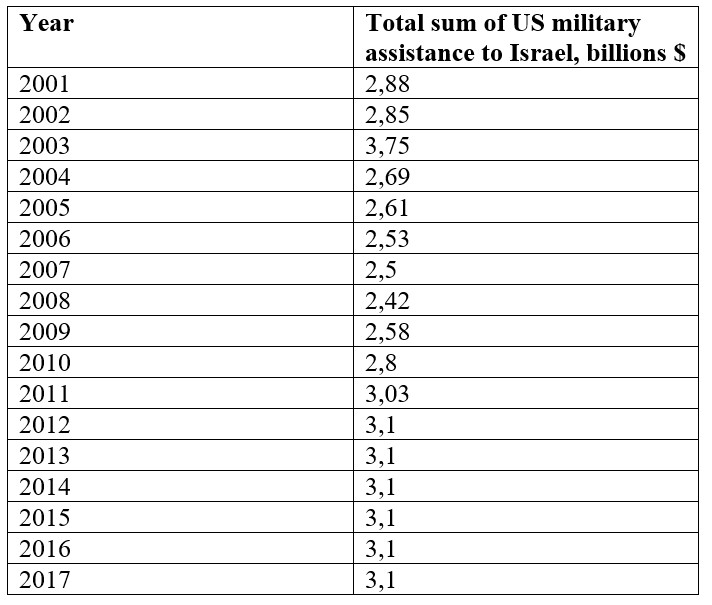
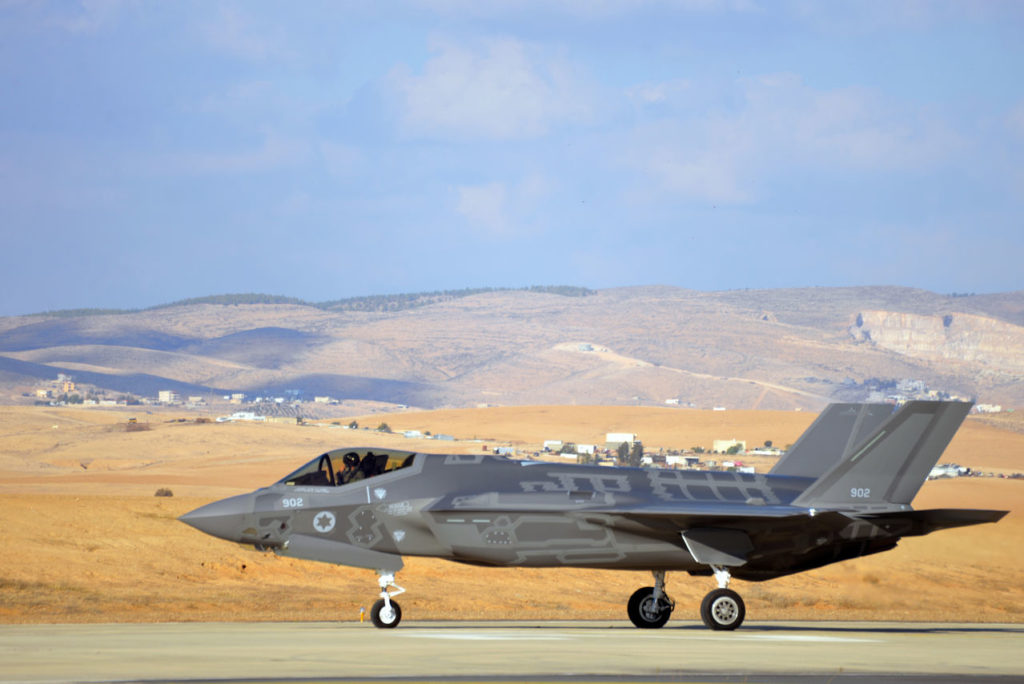
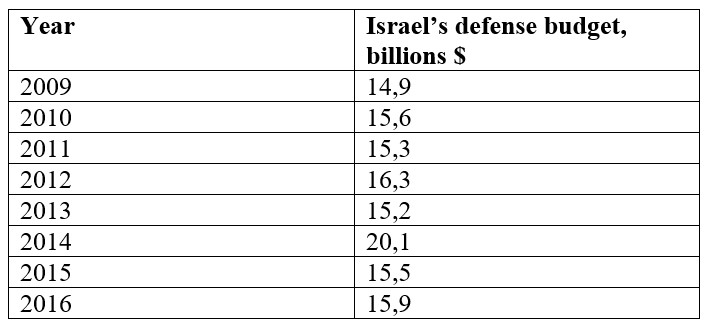
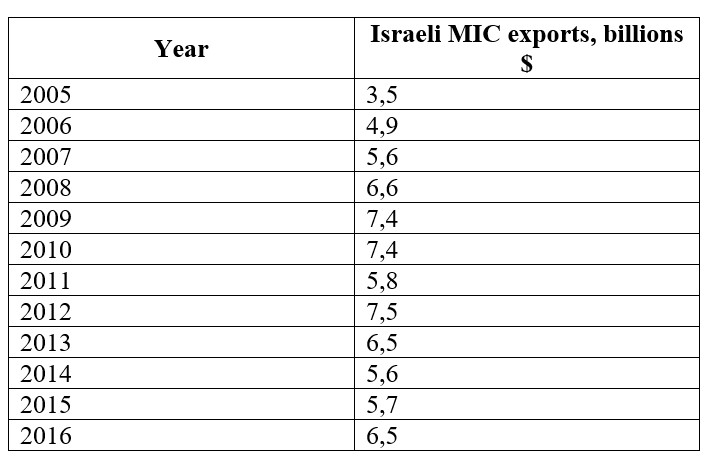

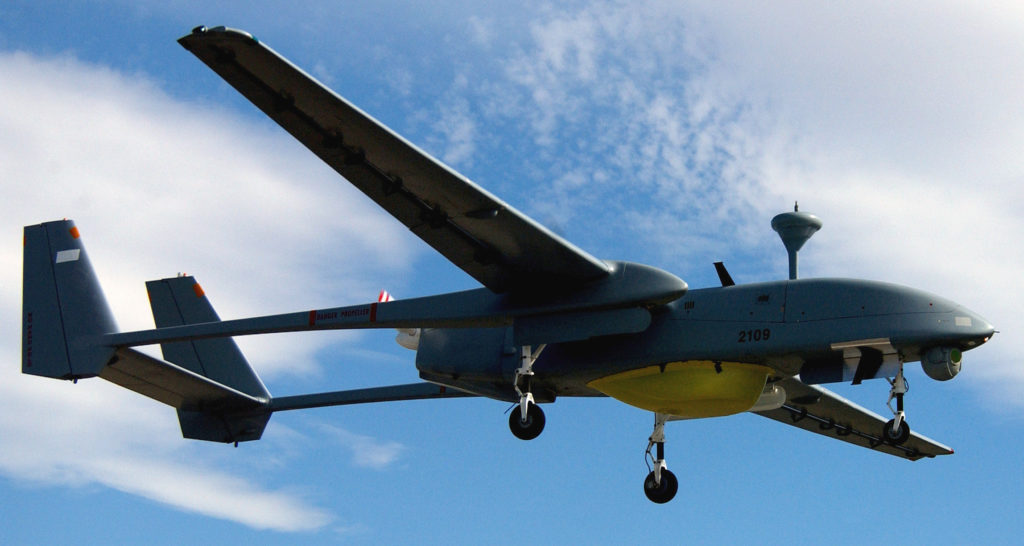
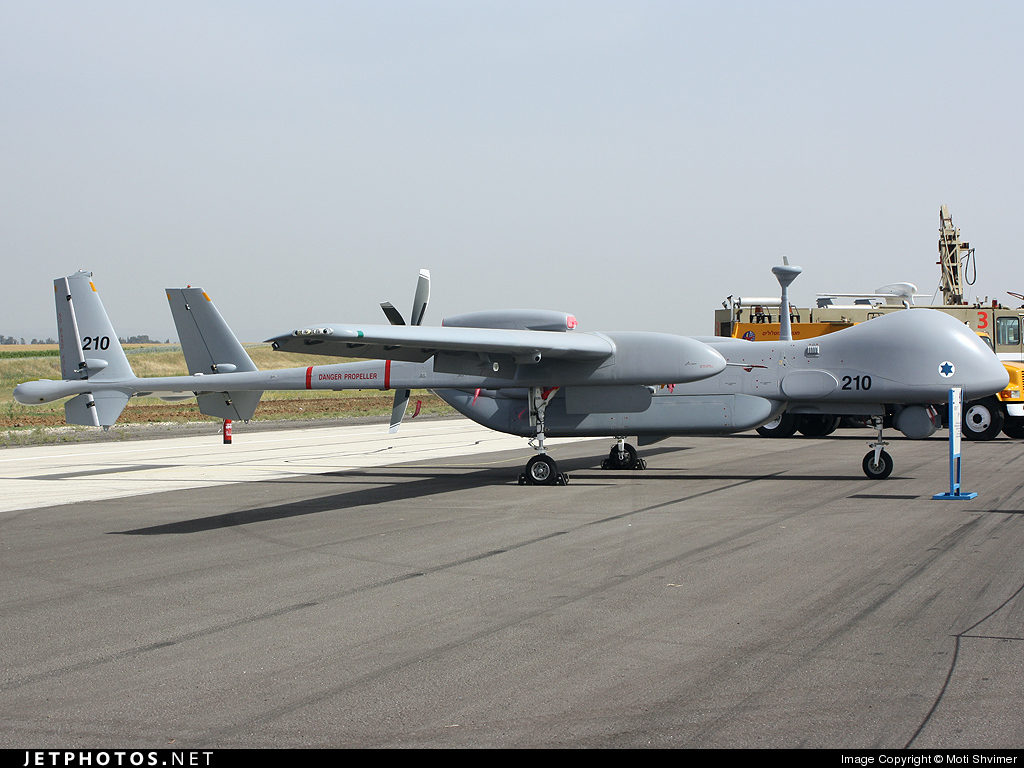
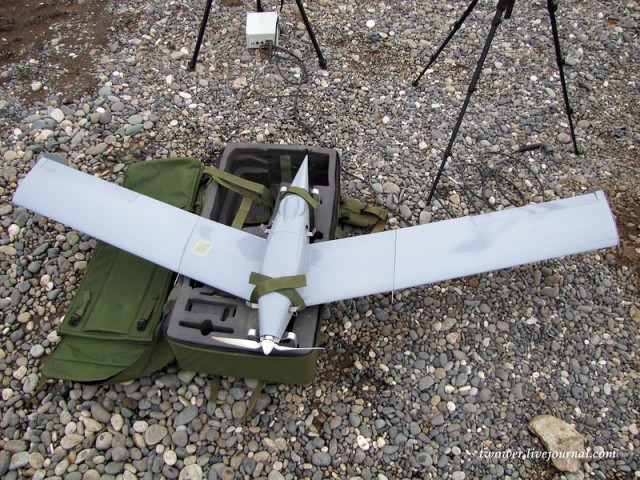
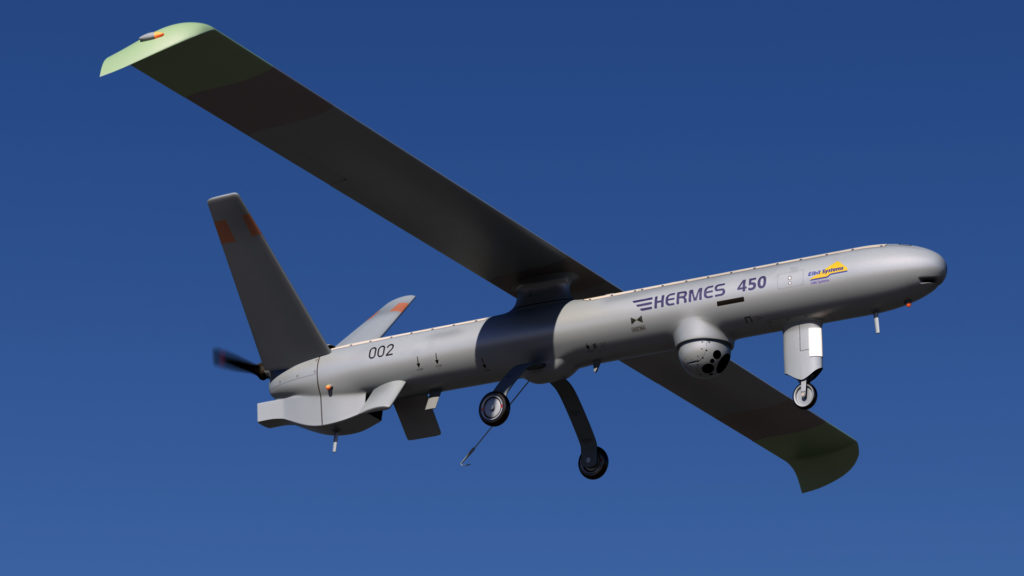
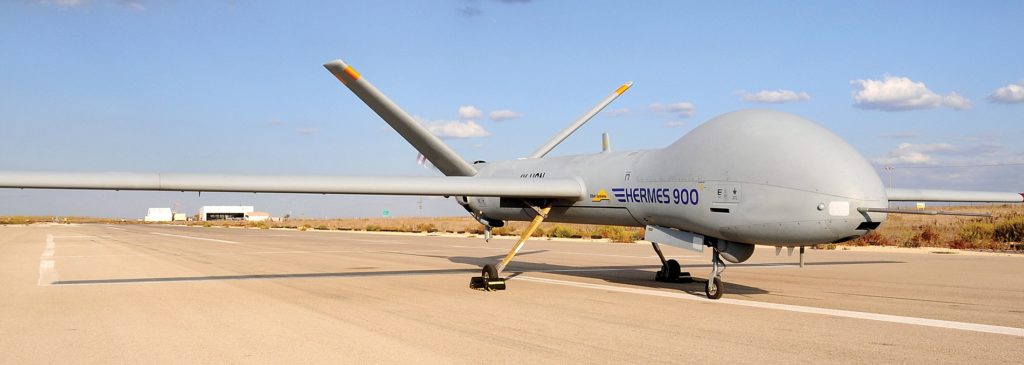
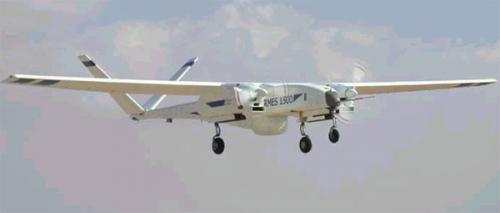
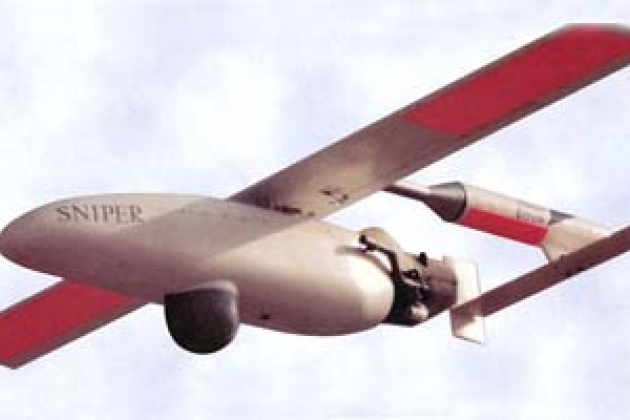
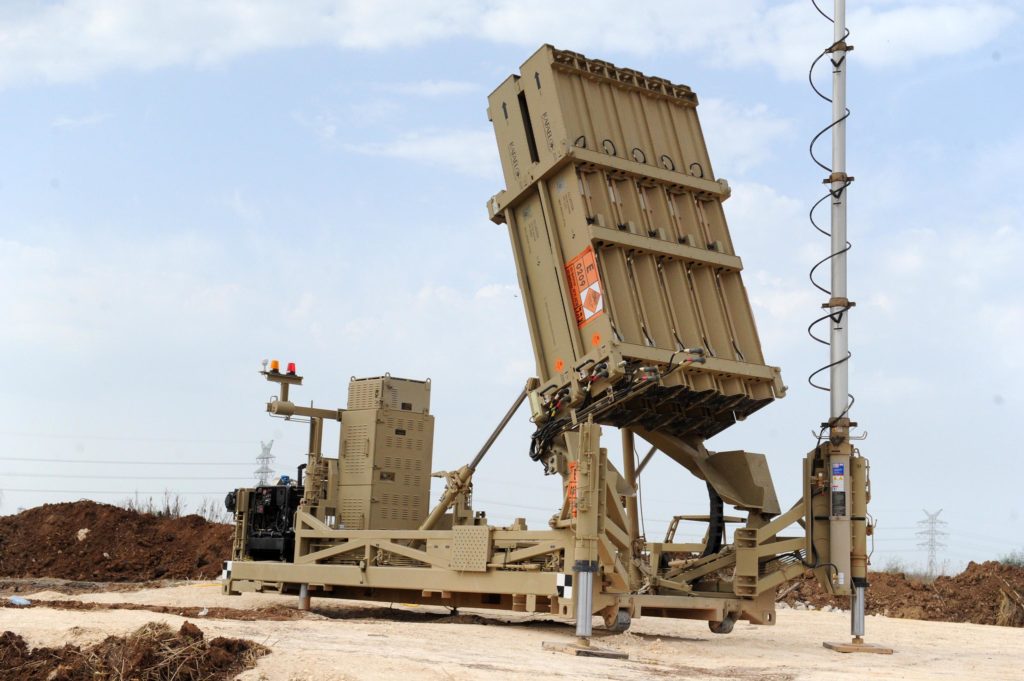
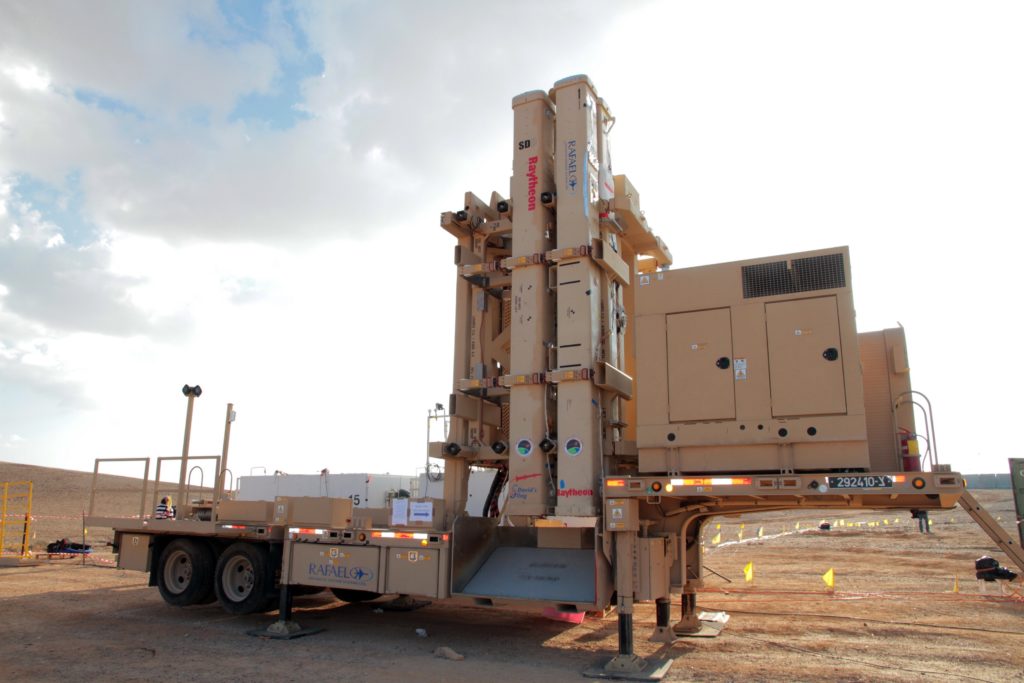
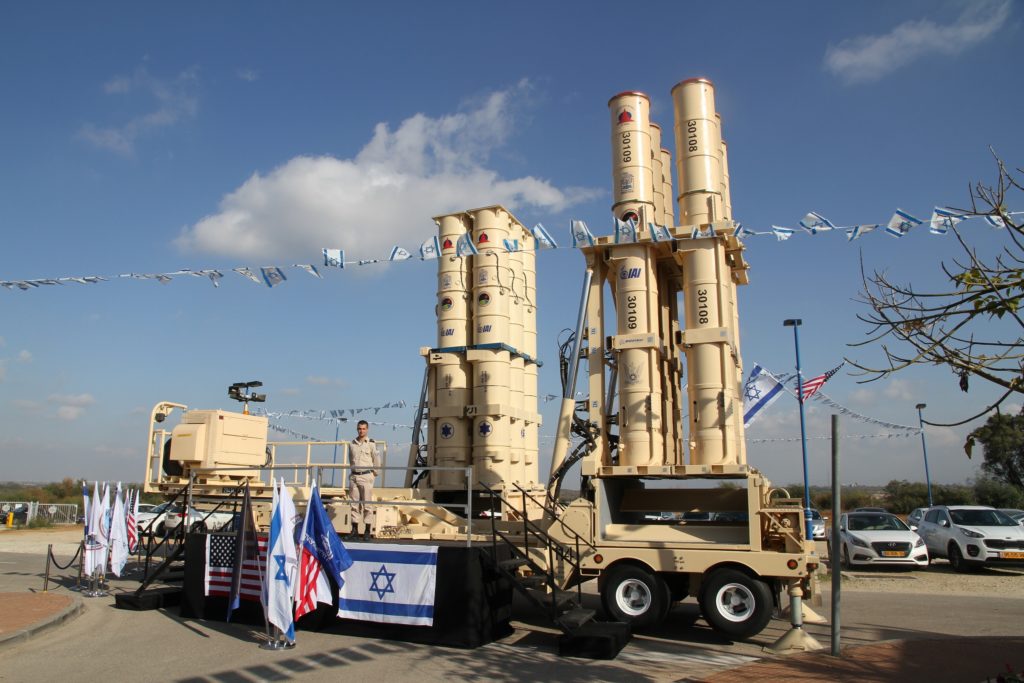
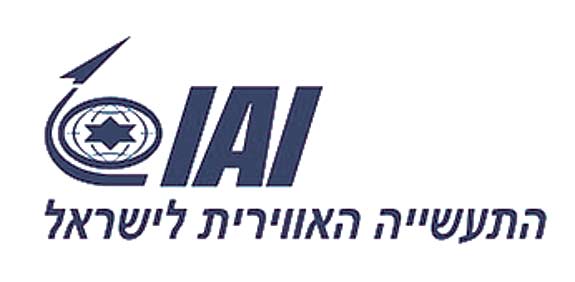
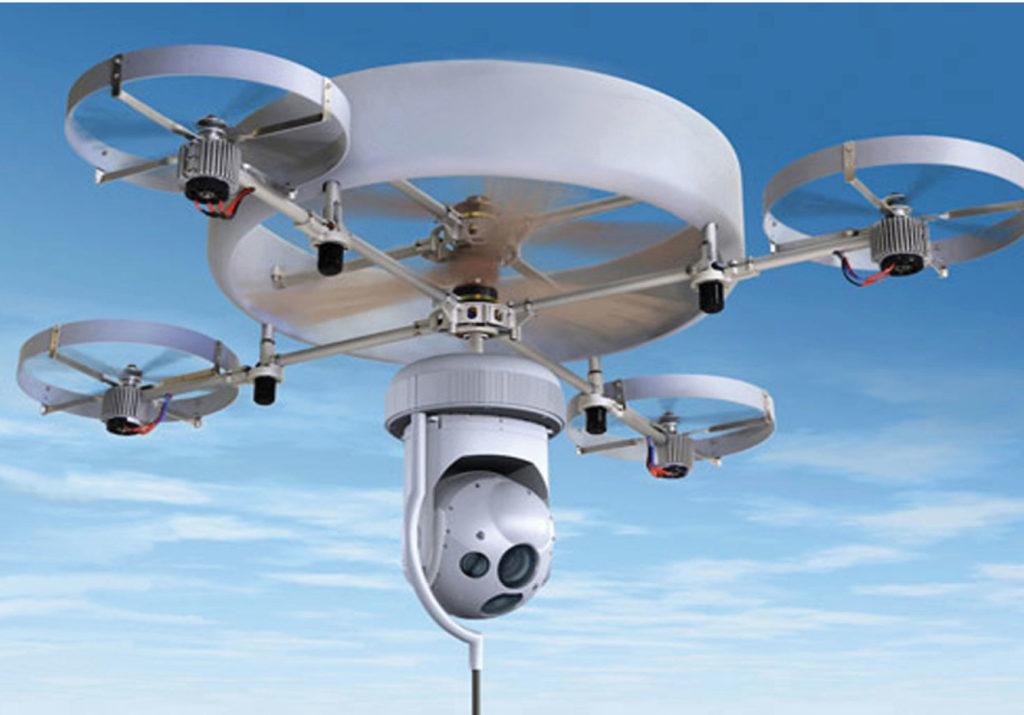
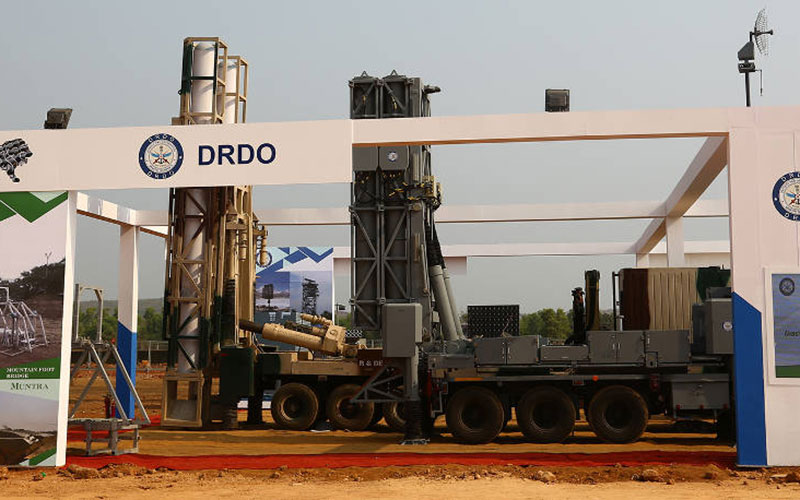

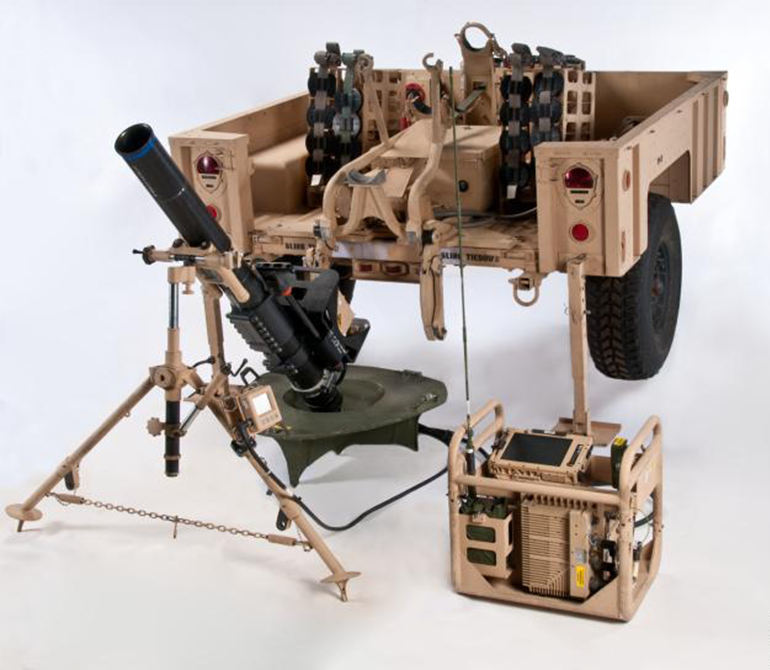



it is amazing all these can/will never help israhell from perm hell ending – losers true and blue
Israel threatened by ISIS and Al Nusra ? Absolute nonsense.
Well, they will be. Once both groups have eliminated their current rivals. Just like how Hamas wasn’t a threat to Israel when it was more busy with its PLO rival in the 80’s. You can use a rabid dog against your enemies, but there will come a time when it will turn against its master. And then you wish you still had sane enemies.
Worth nothing that Hamas’ creation was supported IsraHell.
And it’s true that golems often end up turning on their creators. So far, the Takfiri hordes haven’t.
It’s all been done many times before. They pretend to be enemies, create a war, and open the gates for each other. It’s always khazar on both sides of a war. Jews in Palestine, Jews in Israel, Jews in America, Jews in Iran… doing what they have always done. . trickery and deceit… until the time of the end. Sickening to see why Americans have become so completely asset stripped and crushed to abject slavery. Time for Lawrence August Hargrave, aka Larry Nicholls aka Netanyahu to use all those weapons against the Americans who paid for them…see how well that turns out.
Well said.
But Iran & Hezbollah, which are attacked by the rogue ziofascist entity but have never retailated, are not allowed to build up their armies.
A real civil war In israHELL against zionists is on the horizon , not a staged proxy militants-foreigners-terrorists’s from overseas abroad fake civil war , a real civil war against zionists at israHELL to liberate arab Palestine from zionists-terrorists’s occupation is immenent underway !
Interesting report.
It shows Israeli capabilities for classic warfare.
In a classic war, Israelis can hardly be beaten by their neighbours.
Asymmetric warfare is different and it is there that the largest dangers lie, for the short term at least. Israel has to a large extent infiltrated most of its enemies and as long as they can avoid a full scale invasion of those neighbours, Israel can hardly be beaten.
IsraHell was never, ever, attacked by anyone. Not in 1948, not in 1967, not in the 1980s, 1990s or in 2006. They always invaded and attacked others then squealed they were attacked.
Thus, how can you assert that IsraHell can hardly be beaten? Israelis are cowards. They have attacked unarmed civilians for decades. When faced against an organized and disciplined militia/army (Hezbollah), they failed. Once from 1982-2000 (Israeli military officials called it a “humiliating defeat”) and in 2006 (Mossad attested Hezbollah wasn’t affected militarily and could go on fighting for months).
one nuke and they are done.
so is everybody else in the area.
Zionist are genetically this way. They have been for thousands of years. Like cancer, cancer is doing going to do good things for you. Yes I understand that cancer are living cells, but sometimes living cells are poison to the overall living body. This cancer must be radiated to cure the patient.
https://holodomorinfo.com/
http://ihr.org/
Racist and anti Semitic. The great Jewish people are our brother and sisters. The suffer from the seductive Zionist indoctrination. So, cut the hate crap.
Where do you read “Jews” and/or “Jewish”? He clearly wrote “Zionist”.
The fact remains that the IDF was unable to defeat Hezbollah in their last war of aggression in Lebanon. Hezbollah showed the world and the IDF of its limits. In the final analysis, it comes down to soldier to soldier combat, and the soldier who fights to defend its homeland from foreign invaders prevails over the invaders. Syrian solders will be highly motivated in defending the integrity of their country against foreign occupation. This includes the occupied Syrian Golan Heights which represents a festering wound for the Syrian people.
You are correct about the war IsraHell planned and waged on Hezbollah/Lebanon in 2006: they, the Zionists, failed to reach every single one of their objectives.
In regards to the “final analysis” and aside from the Israeli Brigade, the IDF was worthless.
Israel, Us e UK: aliança assassina !!!
Israel, US e UK, Arábia Saudita: aliança assassina !!
O “eixo da resistência” está neutralizando as ações terroristas do quarteto do mal.
Engraçado que o Brasil condena as ações de Israel e ainda assim compra drones e sistemas de tiro autônomos deles